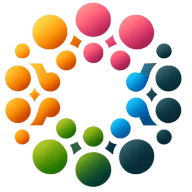6 Positive Impacts of Diversity Trends in the Workplace
Unveiling the transformative power of diversity, this article delves into the profound impacts of inclusive trends reshaping today's workplace. Drawing on expertise from leaders at the forefront of innovation, it explores how embracing a spectrum of perspectives fuels productivity, creativity, and connection. From neurodiverse hiring to cultural fusion, discover the strategies propelling businesses to new heights.
- Neurodiverse Hiring Boosts Productivity and Innovation
- Cognitive Diversity Transforms Team Performance
- Cultural Fusion Enhances Employee Engagement Program
- Diverse Gardening Expertise Elevates Landscaping Business
- Web3 Recruitment Trends Reshape Industry Dynamics
- Blind Recruitment Policy Diversifies Candidate Pool
Neurodiverse Hiring Boosts Productivity and Innovation
I really think inclusive hiring practices can have a game-changing impact on workplace culture and performance. One experience that stood out was when a company I worked with actively expanded its recruitment efforts to include more neurodiverse candidates--individuals with autism, ADHD, and other cognitive differences.
Instead of traditional interviews, they introduced skill-based assessments and adjusted the work environment to be more flexible. Within a year, not only did productivity increase by 25%, but problem-solving and innovation also improved because these employees brought unique perspectives to challenges. Team morale was higher, and retention rates went up because employees felt valued for their strengths.
What I learned? Diversity isn't just about representation--it's about creating environments where different ways of thinking can thrive. When companies embrace diverse talent with real support structures, it leads to stronger teams, better ideas, and a more engaged workforce.

Cognitive Diversity Transforms Team Performance
I was part of a team that intentionally brought neurodiverse hires--individuals on the autism spectrum--into critical roles such as software testing and data analysis. At first, there was curiosity and even some skepticism: Could hiring neurodiverse talent really make a measurable difference?
The impact was transformative. One neurodiverse colleague quickly became our strongest software tester, noticing vulnerabilities and edge-case scenarios other testers had missed completely. Another created data visualizations and analyses that were remarkably clear and insightful, directly improving how the entire team approached our marketing strategy.
Beyond the clear business benefits, our team gained deeper empathy, patience, and respect from adapting our communication styles and processes. The experience profoundly shifted our culture, teaching us that true workplace diversity isn't just hiring people who look different--it's about embracing cognitive diversity, ways of seeing the world unlike our own, and creating a workplace that genuinely values different minds.
My big takeaway? Diversity isn't just fair--it's smart. Real inclusion unlocks levels of creativity, innovation, and performance your company can't touch by playing it safe.

Cultural Fusion Enhances Employee Engagement Program
In my previous career in human resources, I vividly remember a project where workplace diversity truly shone. Our team, composed of individuals from various cultural backgrounds, was tasked with developing a new employee engagement program. One colleague, originally from India, suggested incorporating elements of traditional Indian festivals to celebrate diversity. Another team member, from Brazil, proposed adding elements of Carnival to our company events. This blend of ideas led to an incredibly vibrant and inclusive program that significantly boosted employee morale and participation. Witnessing how these diverse perspectives could merge to create something so dynamic was a powerful reminder of the value diversity brings to a company culture.

Diverse Gardening Expertise Elevates Landscaping Business
One of the best examples of diversity having a positive impact in my workplace was when I hired team members from different cultural backgrounds who brought unique gardening techniques and perspectives. One of my employees had experience in Japanese garden design, and another had worked extensively with native Australian plants. By combining these different skill sets, we were able to offer clients more specialized and creative landscaping solutions. This diversity allowed us to take on a broader range of projects, from traditional English cottage gardens to drought-resistant native landscapes. Clients appreciated the variety of expertise, and it gave our business a competitive edge. My 15 years of experience and horticultural certification helped me recognize the value of these different approaches, ensuring we blended them in a way that maintained high-quality results.
From this experience, I learned that diversity in a workplace isn't just about inclusion. It directly improves creativity, problem-solving, and customer satisfaction. Because of my deep knowledge of plants and landscape design, I was able to integrate my team's diverse skills in a way that enhanced our services rather than creating inconsistency. For example, when designing a low-maintenance garden for a client, we used a combination of Japanese-inspired gravel features, Australian natives for sustainability, and traditional hedging techniques to tie everything together. The result was a stunning, practical garden that exceeded the client's expectations. Without the diversity in my team, this kind of innovation wouldn't have been possible.
Web3 Recruitment Trends Reshape Industry Dynamics
Over the past year, I've seen some notable shifts in Web3 recruitment, reflecting the space's rapid growth. As someone actively recruiting in Web3, these trends stand out, and they highlight how the industry is adapting.
Remote Work Dominates
The move to remote-first hiring is undeniable. Web3 companies are now hiring globally, breaking traditional geographic barriers. Teams are no longer bound to a single location, and this has drastically expanded the talent pool. From my perspective, it's been refreshing to see companies embrace a diverse range of backgrounds and cultures, creating more inclusive environments.
Decentralized Teams and Flat Structures
Decentralization isn't just for protocols; it's becoming the standard in the way teams operate. The rise of flat organizational structures, where collaboration is encouraged and leadership is distributed, is clear. I've found that candidates who thrive in this type of environment, where flexibility and autonomy are key, are highly sought after. It's reshaping how Web3 companies approach team dynamics.
Non-Technical Roles Emerge
While technical roles like developers and blockchain engineers remain in high demand, there's been a growing need for non-technical roles such as marketing, community management, and business development. Companies now look for candidates who can bridge the gap between technical and non-technical aspects of the business. From what I've seen, this trend shows how Web3 is becoming more mainstream, requiring a broader skill set across teams.
Focus on Diversity and Inclusion
Diversity is gaining more attention in Web3 recruitment. Companies are actively building inclusive teams, realizing that diverse perspectives lead to more creative solutions. It's encouraging to see businesses prioritizing diverse hiring practices, knowing it ultimately benefits innovation and growth.
Talent Retention Becomes a Priority
Finally, as demand for Web3 talent soars, companies are paying more attention to retaining their best people. Offering flexible working hours, growth opportunities, and a positive work culture has become just as important as recruitment. From my experience, businesses that focus on nurturing talent are winning in this competitive landscape.
These trends show how Web3 recruitment is maturing. The future of the space looks exciting, and these shifts in how we hire are just the beginning.

Blind Recruitment Policy Diversifies Candidate Pool
Absolutely! At a tech company I was familiar with, they recently implemented a policy of blind recruitment to enhance their diversity. This meant that the recruiters did not know the candidates' names, genders, or ethnic backgrounds during the initial screening phases. It was fascinating to see how this small change significantly diversified the pool of candidates moving to the interview stage. Over time, the teams became more varied not just in demographics but also in the perspectives and ideas they brought to the table, leading to innovative solutions and a more dynamic work atmosphere.
From this experience, I learned that sometimes, structural changes in processes can create an environment where diversity thrives. It was eye-opening to see how systemic biases could be minimized and how these changes could lead to real improvements in the company's performance and culture. It taught me that in our efforts to be more inclusive and equitable, it's crucial to continually assess and adapt our own practices and strategies. This proactive approach in not just hiring, but also in nurturing a diverse workforce, is essential for any organization wanting to stay resilient and competitive in today's global market.



